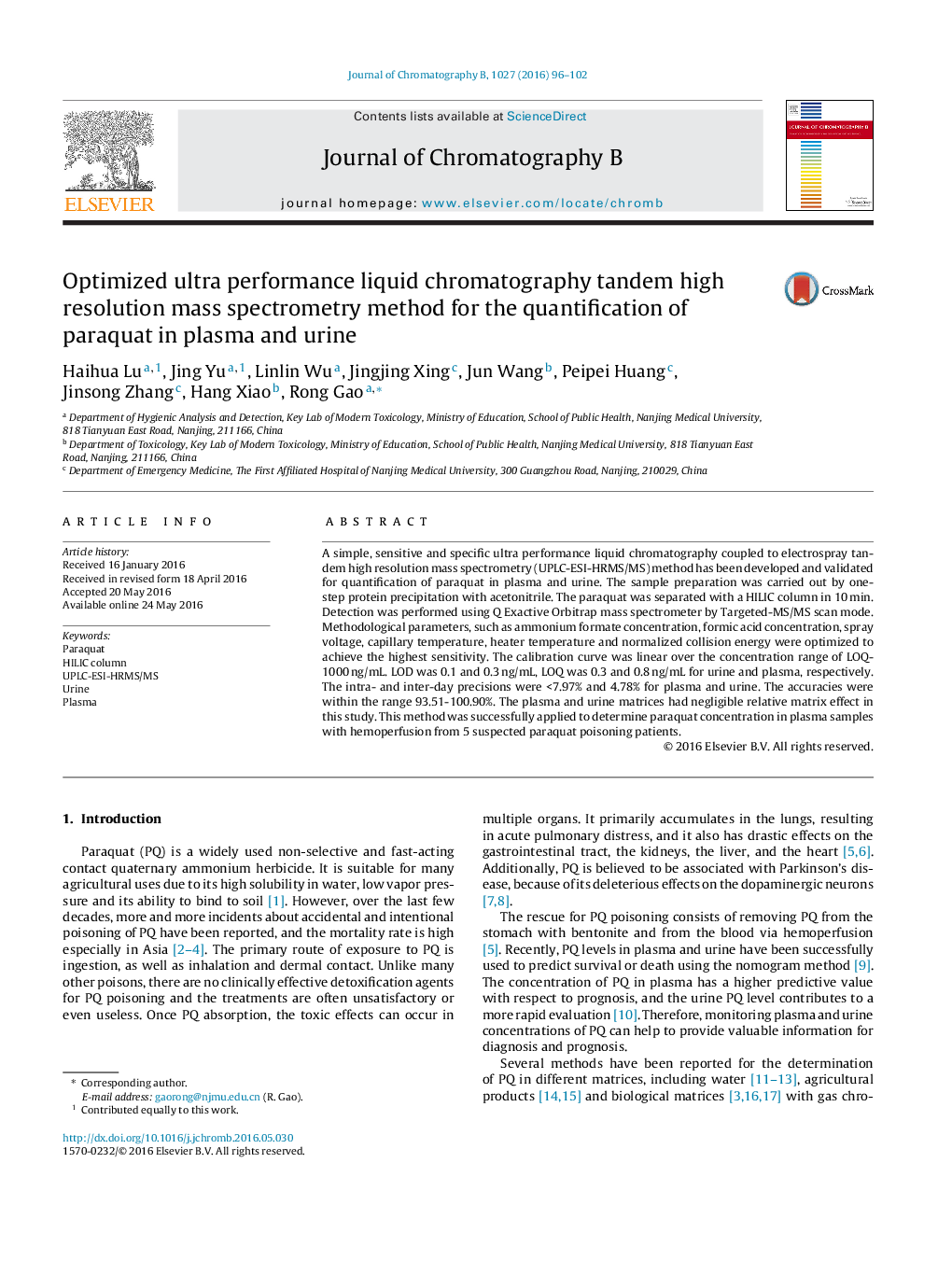| Article ID | Journal | Published Year | Pages | File Type |
|---|---|---|---|---|
| 1212691 | Journal of Chromatography B | 2016 | 7 Pages |
•To obtain the highest sensitivity, most experimental parameters included in LC condition and MS condition were optimized, such as ammonium formate concentration, formic acid concentration, spray voltage, capillary temperature, heater temperature and normalized collision energy.•The sample preparation step was simple, and the method was fast enough to help to provide valuable information for diagnosis and prognosis in patients with paraquat poisoning.•This method provided lower LOD and LOQ with little specimen volume of 100 μL. LOD was 0.1 and 0.3 ng/mL, LOQ was 0.3 and 0.8 ng/mL for urine and plasma, respectively.•Various Targeted-MS/MS transitions were evaluated to elucidate the cross-interference.
A simple, sensitive and specific ultra performance liquid chromatography coupled to electrospray tandem high resolution mass spectrometry (UPLC-ESI-HRMS/MS) method has been developed and validated for quantification of paraquat in plasma and urine. The sample preparation was carried out by one-step protein precipitation with acetonitrile. The paraquat was separated with a HILIC column in 10 min. Detection was performed using Q Exactive Orbitrap mass spectrometer by Targeted-MS/MS scan mode. Methodological parameters, such as ammonium formate concentration, formic acid concentration, spray voltage, capillary temperature, heater temperature and normalized collision energy were optimized to achieve the highest sensitivity. The calibration curve was linear over the concentration range of LOQ-1000 ng/mL. LOD was 0.1 and 0.3 ng/mL, LOQ was 0.3 and 0.8 ng/mL for urine and plasma, respectively. The intra- and inter-day precisions were <7.97% and 4.78% for plasma and urine. The accuracies were within the range 93.51-100.90%. The plasma and urine matrices had negligible relative matrix effect in this study. This method was successfully applied to determine paraquat concentration in plasma samples with hemoperfusion from 5 suspected paraquat poisoning patients.
